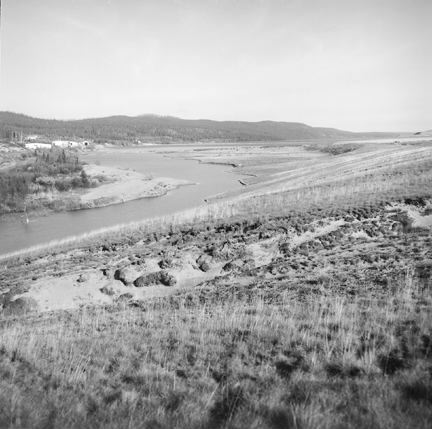A partnership between the Eastern Habitat Joint Venture (EHJV) and the Iron Ore Co. of Canada (IOC) will provide wildlife in the Wabush Lake area of Labrador with access to thousands of hectares of new habitat.
Known as “Tailings to Biodiversity,” the research initiative will examine the potential of creating wildlife habitat from inert tailings of rock and sand produced by IOC’s iron mine in Labrador City.
The partnership was formed through the EHJV, an initiative aimed at protecting wetlands in eastern Canada that accommodate waterfowl and other migratory birds of the Atlantic flyway, and the North American Waterfowl Management Plan, an agreement signed in 1985 between the Canadian and U.S. governments to develop a strategy to restore waterfowl populations through habitat protection and restoration.
The IOC and its parent company, London-based Rio Tinto, have committed $120,000 to the project for the upcoming year. The money will be used to procure additional funds for use on this and other projects throughout the province. Other partners include the province of Newfoundland and Labrador, Environment Canada, the Canadian arm of Ducks Unlimited, Wildlife Habitat Canada, and the Nature Conservancy of Canada.
“Rio Tinto, IOC’s majority shareholder, has long been a world leader in the principles of sustainable development,” says Terry Bowles, IOC’s president and CEO. “Its contribution both directly and with our other shareholders, Mitsubishi and the Labrador Iron Ore Royalty Income Fund, is a solid example of how diversified stakeholders can come together to turn what was previously an environmental challenge into a unique opportunity.”
The 5-year project will be reviewed after each year.
Since the mine began operating, in the early 1960s, tailings have been deposited into a nearby lake in accordance with provincial regulations. Under the Canadian government’s new metal mining effluent regulations, which came into effect in 2002, all metal mines are now required to confine their tailings.
The tailings-and-biodiversity project was established to meet the requirements of the new regulations and address the broader issues of biodiversity and multiple land use.
Over the life of the mine, the project will have a positive impact on approximately 32 sq. km of tailings. This habitat project will benefit a number of species of waterfowl, including black ducks and geese, as well as a variety of other birds and wildlife.
— The preceding is from an information bulletin published by the Iron Ore Co. of Canada.


Be the first to comment on "Tailings to biodiversity"